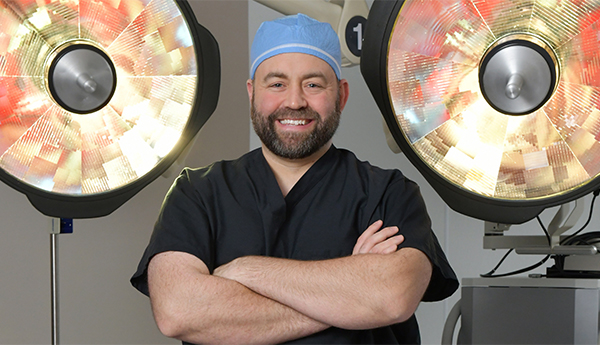
Robotic technology has transformed joint replacement surgery, offering benefits like greater precision, faster recovery, and improved outcomes. Robotic joint replacement expert Dr. Christopher Palmer shares insights into this innovative approach and answers common questions about robotic joint replacement.
Is the Joint Replacement Surgery Performed by the Robot?
No, the robotic system is a tool used by the surgeon to enhance precision during the procedure. The surgeon remains in full control throughout the surgery, guiding the robotic arm based on preoperative planning and real-time adjustments. The robot assists in executing the surgical plan with a higher degree of accuracy, but the expertise and decision-making of the surgeon are essential components of the operation.
What Does Robotic Joint Replacement Surgery Involve?
Robotic joint replacement surgery uses advanced robotics to assist surgeons in performing precise and minimally invasive joint replacements. The robotic system provides real-time data and guidance, helping surgeons to plan and execute the surgery.
How Does Robotic Joint Replacement Compare to Traditional Methods?
Robotic joint replacement offers several advantages over traditional methods. The precision of robotics allows for more accurate implant placement, potentially reducing the risk of complications and improving the overall function of the joint. Patients often experience less pain and a quicker recovery due to smaller incisions and less disruption of surrounding tissues. While traditional methods are effective, robotics represents a significant advancement in surgical technology.
What Can I Expect During the Recovery Process?
Recovery from robotic joint replacement surgery is generally quicker compared to traditional approaches. Patients often report reduced pain and swelling, which contributes to a faster return to daily activities.
Are There Any Risks or Considerations?
As with any surgical procedure, robotic joint replacement carries some risks, including infection, bleeding, or adverse reactions to anesthesia. However, these risks are similar to those associated with traditional joint replacement surgeries.
Robotic joint replacement is a cutting-edge advancement that offers significant benefits for patients seeking relief from joint pain and dysfunction.
Author: Dr. Christopher W. Palmer, DO is board certified, fellowship trained Orthopaedic Surgeon at Signature Medical Group in Missouri, specializing in robotic assisted hip and knee replacement. Dr. Palmer has specialized training in the Mako SmartRobotics ™ System with a focus on compassionate, individualized patient care.




